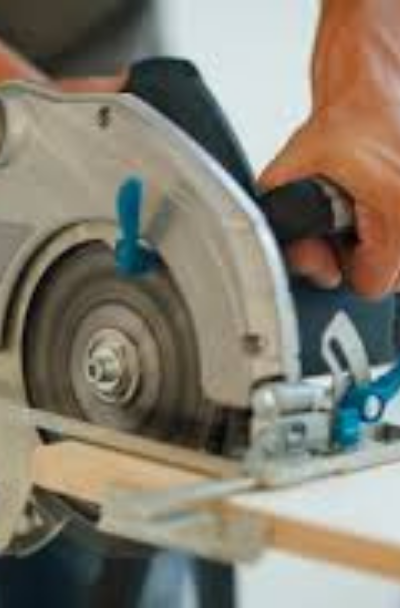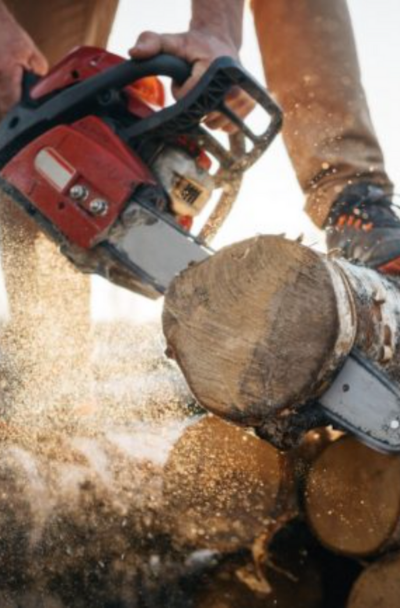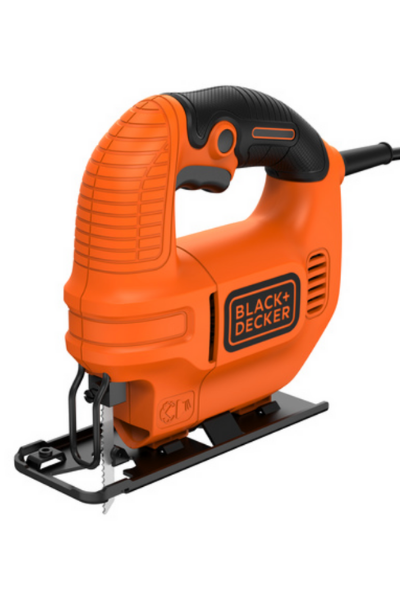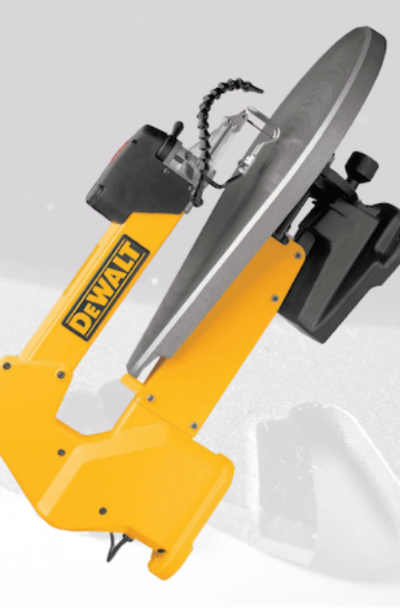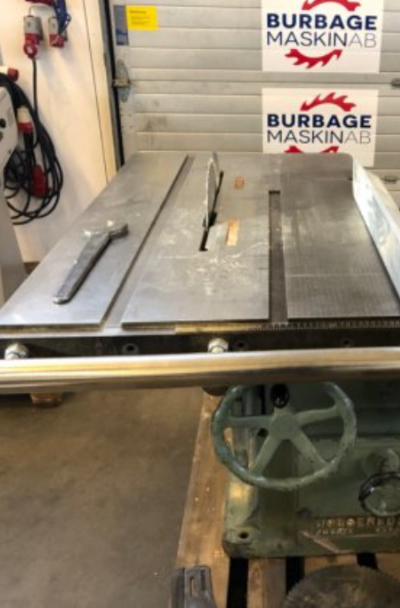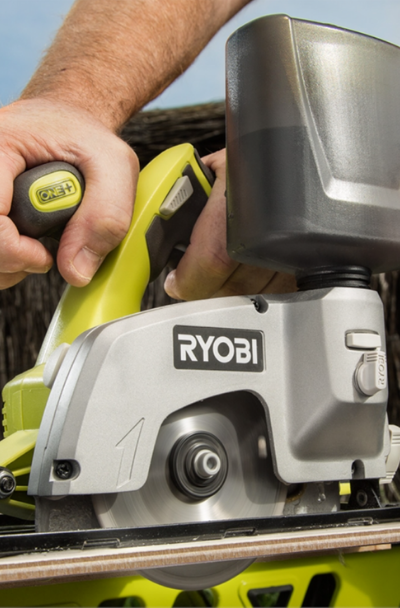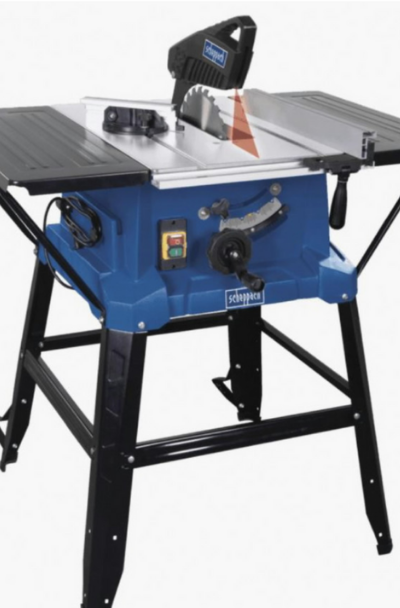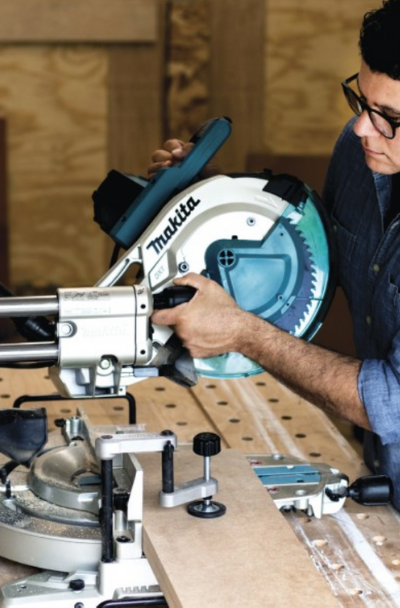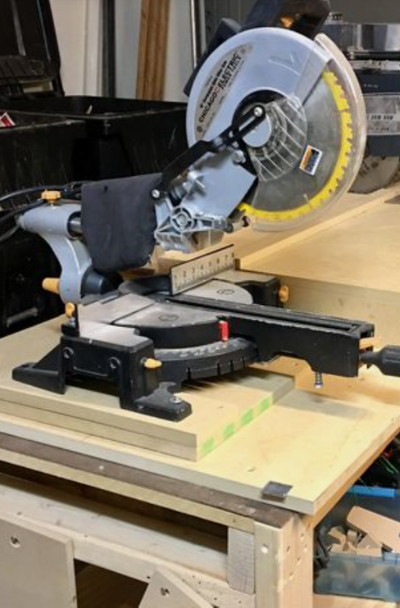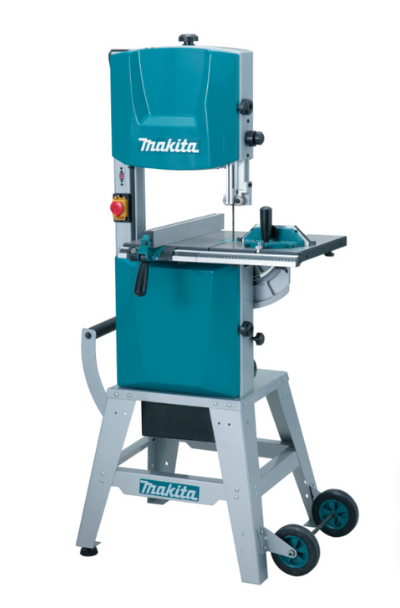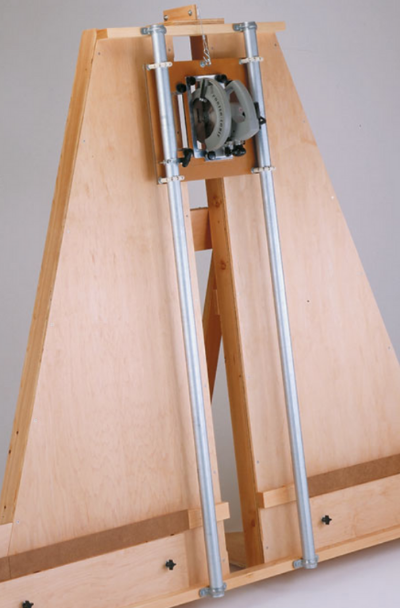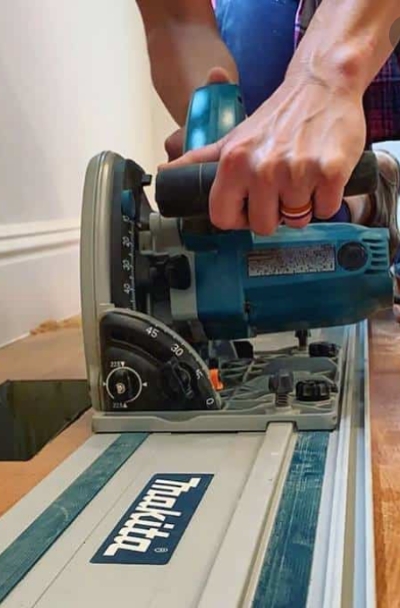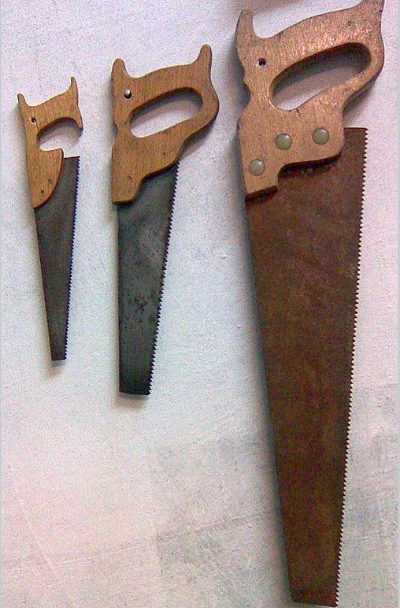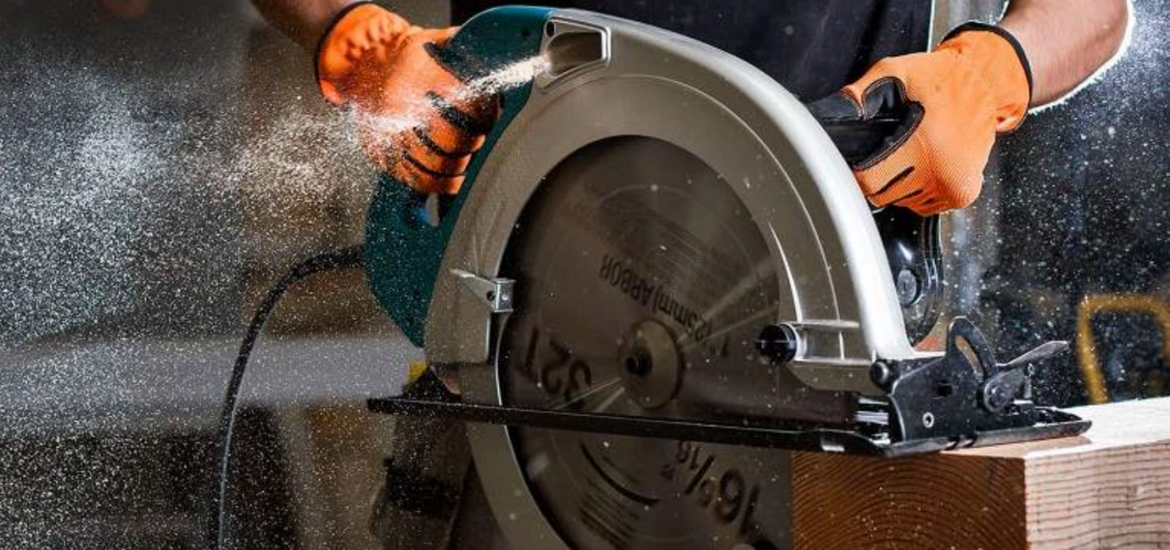
Featured Image: Wendy O’Brien Interior Planning & Design
Different projects require different tools to get the job done right. Whether you’re a DIY enthusiast or looking to get some construction work done around the house, it’s essential to have the right kind of saw at your disposal.
From hand saws, to power saws, to other wood-cutting tools, there are many saws on the market that each provide specific benefits and features. It can be confusing trying to figure out which saw works best for which job without having a decent overview of what they are and how they work. Below, we’ve compiled a list of 17 different saw types to give you an idea of the many different functions available to you with these tools.
1. Circular Saw
One of the best wood-cutting tools right off the bat is the circular saw, which is commonplace for any DIY professional. As one of the most versatile tools on the market, it is best used for cutting wood and materials that are softer than wood.
How does it work?
A circular saw is typically hand-held and powered by electricity. There is a rotating blade that you can push along a piece of wood or another material you are looking to cut. It is important that you have a stable, stationary work table. The wood you are cutting should be completely still, while the rotating blade is the only component that should be moved.
Check out our review on the 5 Best Cordless Circular Saws to take a look at some quality circular saw products.
2. Chop Saw
A lesser-known type of saw, the chop saw is a heavy-duty woodworking tool that can cut through tough materials. If the circular saw won’t cut it (pun intended), the chop saw should be your go-to power tool.
How does it work?
Don’t be fooled by its appearance; the chop saw may look like a miter saw but it serves a very different purpose. It is not a typical power tool with rotating blade. The chop saw is most commonly found in a contractor’s workshop, rather than in an at-home DIY garage. This is because of the heavy-duty materials that this saw is designed to cut through. You should use this saw to cut metal, concrete, and brick.
3. Chainsaw
Everyone should be familiar with what a chainsaw is and what its main purposes are. But did you know there are many different types of chainsaws that serve different functions? There are battery-powered chainsaws, electric chainsaws, and cordless handheld chainsaws that can handle different levels of cutting power.
How does it work?
Chainsaws use a continuous rotating chain of teeth to cut logs and trees in rapid motion. A chainsaw should really only be used to chop up big pieces of wood, and it is not ever recommended for smaller projects where you need to make accurate or precise cuts.
Chainsaws are commonplace in many American homes, as they are good tools to use for pruning trees or chopping off branches. Some bigger models can even fell trees if you know how to do it properly.
4. Jigsaws
A jigsaw is a very specific and particular saw that serves to make jagged cuts. If you need straight, clean, and precise cuts for your projects, then this is not the saw for you. Jigsaws are typically corded handheld saws powered by electricity to make cuts quickly.
How does it work?
Jigsaws can be used to cut different jagged shapes in wood, granite, tiles, and plastic. Some jigsaws can even cut through metal. Although jigsaws are similar to reciprocating saws, they have a few key differences:
- The jigsaw blade faces downward and makes direct cuts into the wood.
- Jigsaws make non-straight cuts as opposed to straight cuts made by reciprocating saws.
It is versatile in terms of how many materials you can easily cut using a jigsaw. You may see it used most often to cut tile or stone slabs in preparation for countertops.
5. Scroll Saw
Some saws are useful for a number of different projects; the scroll saw, on the other hand, is a very specialized tool. This is a saw that comes on a stand, rather than being a handheld device, as the saw and materials need to be as sturdy as possible. A scroll saw is likely one of the most accurate-cutting saws on the market today, as this is the most recommended power tool for those looking to do something intricate, detailed, and precise.
How does it work?
If your DIY projects involve making toys, art, or other similar designs, a scroll saw is the right tool for your needs. It is exceptional at making intricate patterns and cutting in precise ways. The scroll saw does have some limitations, though; it can only cut 2” into wood, whereas bandsaws can cut much thicker pieces of wood.
Our experts have compiled a list of our favorite scroll saws in our 7 Best Scroll Saws 2020 Review.
6. Rip Saw
The rip saw is commonly mistaken for any small hand saw. It is also a specific type of cut that a saw can make, so it is sometimes confusing to hear the term “rip saw” in reference to an actual saw type. But the rip saw is a true power saw through and through, and it is designed to make rip cuts, as the name implies.
How does it work?
The rip saw is used for cutting and slicing lumber, and can work through large amounts of materials at a time. If you’re into some heavy-duty work, you may want to consider this kind of saw for your next major DIY project. There are many different kinds of rip saws, including the straight line rip saw, which is popular among builders.
7. Tile Saw
Tile saws are useful when you are looking to specifically cut tile instead of another material. Hand-held saws, table saws, and most circular saws do not do a very good job cutting tile precisely, which is why a tile saw may be necessary for this particular kind of work.
How does it work?
Out of the many different saw types, the tile saw has one of the hardest blades. Specialty diamond blades can cut through just about anything without so much as a scratch. When it comes to cutting delicate, breakable tiles, you need something quick and precise.
The two major types of tile saws include dry tile saws and wet tile saws. Most saw users agree that a wet tile saw is more beneficial than a dry saw because the constant use of water prevents over-heating and makes for a much more precise cut. Check out our favorite wet tile saws in our 2020 review.
8. Table Saw
The table saw is the lifeblood of the carpenter. It is arguably the most common, the most versatile, and the most essential type of saw that covers a wide range of construction jobs and DIY projects. The table saw is as the name implies – as big as a table, usually with a spinning circular saw in the middle to cut wood and other similar materials.
How does it work?
Table saws are great tools for beginners as they offer simplicity with enough power to get most at-home projects done. Used mainly in woodworking, table saws can even cut plastic and aluminum. You can make a variety of different cuts with a table saw, including rip cuts, angled cuts, cross cuts, and more.
It is also easy to exchange the blade for another kind of blade that will get the job done faster. The only drawback to the table saw is that you cannot easily pick it up and transport it to another location.
9. Miter Saw
A specialized yet popular kind of saw, the miter saw is common among professional contractors. It makes miter cuts, a particular kind of saw cut that slices wood in any angle aside from 90-degrees.
How does it work?
Miter saws typically cut across the length of the wood, making straight cuts or crosscuts depending on your specific needs. If your project requires angular cuts, this is our #1 saw recommendation for you to use. You can even cut other soft materials and make intricate or customized cut patterns. Miter saws are used to make furniture, frames, and other pieces of furniture with shapes that are too complicated to cut with a table saw.
There are many different types of miter saws on the market that can meet a wide range of different needs. Take a look at our Best Miter Saw Review as well as our Best Miter Saw Stand Review to learn more about the best equipment.
10. Radial Arm Saw
You won’t find any other saw quite like this one. The radial arm saw has a blade attached to a moving arm, rather than attached to a table or a static piece. In a scenario where you are using this kind of saw, you would keep the table steady and move the radial arm to cut the wood you’re working with.
How does it work?
Radial arms act as the one-size-fits-all kind of saw that can accomplish pretty much any kind of woodworking job. While some professionals have replaced radial arm saws with upgraded miter saws, you will still find a wide range of uses for this tried and true tool. It is easier to cut wider pieces of wood and use larger workspaces with this kind of saw.
11. Reciprocating Saw
The reciprocating saw is very different from traditional saws. In fact, it’s pretty different from the rest of the saws on this list. The key difference lies in the way the blade moves and responds: the blade pushes forward and then pulls back rapidly, almost like it is punching the wood. Essentially, it saws through wood the same way two people would manually run a saw back and forth through a tree.
How does it work?
It may seem time-consuming, but the reciprocating saw can really get the job done. This is an ideal electric saw for when you need to clean up your yard by pruning trees. It also works for cutting tile, brick, and most wood. If you have a little demolition project ahead of you, this is the kind of saw you should keep your eyes on.
Need ideas? Here are our 7 Best Reciprocating Saws of 2020.
12. Band Saw
The band saw has a very unique blade in comparison with the other types of saws. This power saw is a large and stationary piece of machinery that should stay in one place once it’s installed. It is mainly used to cut pipes, tubes, and wood with curved cuts and slices.
How does it work?
Think of the band saw as a larger and more complex version of a jigsaw. Two metal bands run through the materials in rapid succession to create cuts, making even or jagged slices depending on what you want. The blade is situated between the two wheels, which rotate to create a continuous band of teeth. While the stationary band saws are the most common, there are handheld band saws available.
13. Panel Saw
The panel saw is used to cut panels. That may seem pretty self-explanatory, but the panel saw is an important saw for large-scale work. Many workers see panel saws as enlarged table saws, since they include a solid surface and a blade on a track so you can cut big pieces.
Panel saws come in two types: horizontal or vertical. Horizontal panel saws are similar to the above description, as they resemble table saws in many ways. However, many workers actually prefer vertical panel saws because they stand upright and take up much less space in the work area.
How does it work?
Panel saws are simply for big straight cuts on wooden panels or similar materials. If you’re looking to make angled cuts, you might need to invest in a different kind of power tool. If you have wooden boards that are thin in width or depth, a panel saw may be too powerful for it.
14. Track Saw
Track saws are sometimes classified as circular saws, but they come with an additional track so you can make even more precise cuts. Track saws make for great workstations when you are trying to cut large pieces of wood, plastic, or board.
How does it work?
Some people prefer a specific type of track saw known as the plunge-cut track saw. While they share many visual and functional similarities with the circular saw, they come with more movement capabilities. For example, the track saw does not risk moving to the side or slipping off the track as circular saws do. It is fixed to the track so only smooth back and forth movements are possible.
Looking for the perfect track? Take a look at these sawhorses to give you an idea of what kind of wood saw would be best for the DIY project you have in mind.
15. Hand Saw
So far we have only reviewed electrical saws and power saws. But what about the non-mechanical hand saw? Some projects call for some traditional blade and handle action, and there are some projects so detailed that not even the finest machinery can fit into those little nooks and grooves.
Hand saws, back saws, and frame saws can all be hand-held tools with a pistol-grip handle and jagged-toothed blade capable of cutting almost anything.
How does it work?
The type of hand saw you want depends on what kind of project you’ve got going on. Veneer saws are great for cutting hardwood, while keyhole saws come with short blades and are good for making interior cuts and pilot holes.
16. Flooring Saw
Possibly one of the least common types of saws on the market today, the flooring saw is obscure but useful. If you are cutting wood for flooring, this flat power saw is the best in the business. One of the biggest advantages of this saw is that it’s pretty portable, making it easy to carry from job to job. Yet it is still large enough to easily glide over the wood you want to cut, making clean and straight cuts every time.
How does it work?
You typically won’t see a flooring saw in a DIY garage. Instead, this saw is preferred by professional flooring experts who cut and install custom laminate flooring. If you want to make floor panels at home, you may want to try out a jigsaw before investing in a flooring saw for personal use.
17. Oscillating Saw
Need to make really accurate cuts, but you don’t have a lot of space to get your work done? That’s what the oscillating saw is for. This is a hand-held saw that can also come with a mount stand, giving you whatever kind of access you need.
How does it work?
The oscillating saw has a blade that vibrates really fast in order to create cuts. This makes it easy to fit into small spaces. For this specific situation, it is better to not have a moving or rotating blade since you simply can’t afford the extra space. An oscillating saw is good for finishing up some interior or smaller detailed work.
Choose the Best Saw for You
From projects large to small, from DIY to professional, there is a saw to get the job done right. It can be overwhelming upon first glance at the saw market, with so many different options at your disposal and not enough information to tell you which one would best meet your needs. Saws are essential tools that anybody who likes to work with their hands will own at least a few of throughout their personal or professional lives.
If you have more questions about the right saw for you, or you want to learn more about woodworking projects, follow our Sebring Design Build blog for updates and guides!
This is an image roundup post, curated to showcase and promote other reputable contracting companies’ and their amazing work. To have any of the images removed, please reach out to us and we would be happy to do so.

